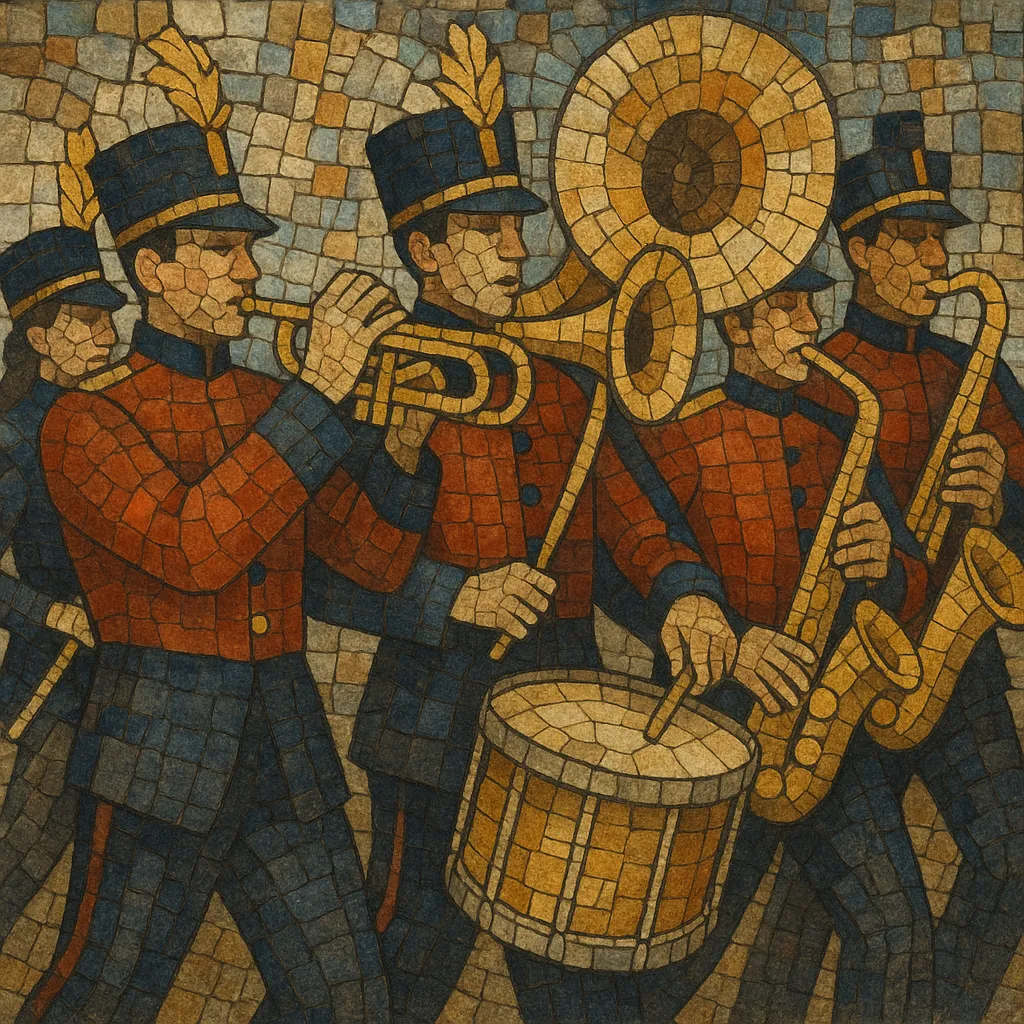
Marching band is a wind–percussion ensemble that performs while moving, combining musical presentation with choreographed drill formations. Typical instrumentation includes brass (trumpets, mellophones/flugelhorns, trombones, baritones/euphoniums, sousaphones), woodwinds (piccolos, flutes, clarinets, saxophones), and a battery percussion line (snares, multi-tenors/quads, bass drums, cymbals), often with a color guard and, in modern field shows, an optional front ensemble (mallet keyboards, auxiliary percussion, electronics).
The genre spans parade-style performance at a steady march tempo and field-show productions that integrate popular, classical, and jazz repertoire with visual design. Styles range from “corps-style” precision drill to show-style presentations rooted in HBCU traditions that emphasize groove, dance, and call‑and‑response crowd engagement.
Marching band grew out of European military and brass band traditions that took shape across the 18th and 19th centuries. As civilian wind bands proliferated, the march repertoire and the mobile format coalesced, aided by composers and bandleaders such as John Philip Sousa who standardized tempos, forms, and the spectacle of massed winds and percussion.
In the United States during the late 19th and early 20th centuries, secondary schools and universities adopted marching bands for parades, ceremonies, and (increasingly) football halftime shows. This institutional setting fostered two major currents: corps-style bands, emphasizing precision drill, symphonic sonorities, and competition-ready design; and show-style bands, developed prominently at Historically Black Colleges and Universities (HBCUs), blending swing, soul, funk, and later hip hop with dance, drumline features, and high-energy showmanship.
From the mid‑20th century onward, competitive circuits, pageantry organizations, and adjudication systems (e.g., Bands of America and the influence of drum and bugle corps design) pushed arranging, percussion writing, and visual design toward greater sophistication. Front ensembles, amplified soloists, and electronic elements became common in field shows. Today, marching band spans parade traditions, collegiate and HBCU show bands, and corps‑influenced programs, while remaining a cornerstone of community identity, school spirit, and public ceremonial music.

